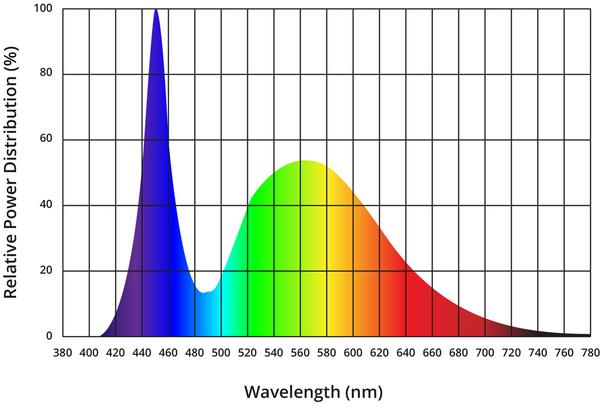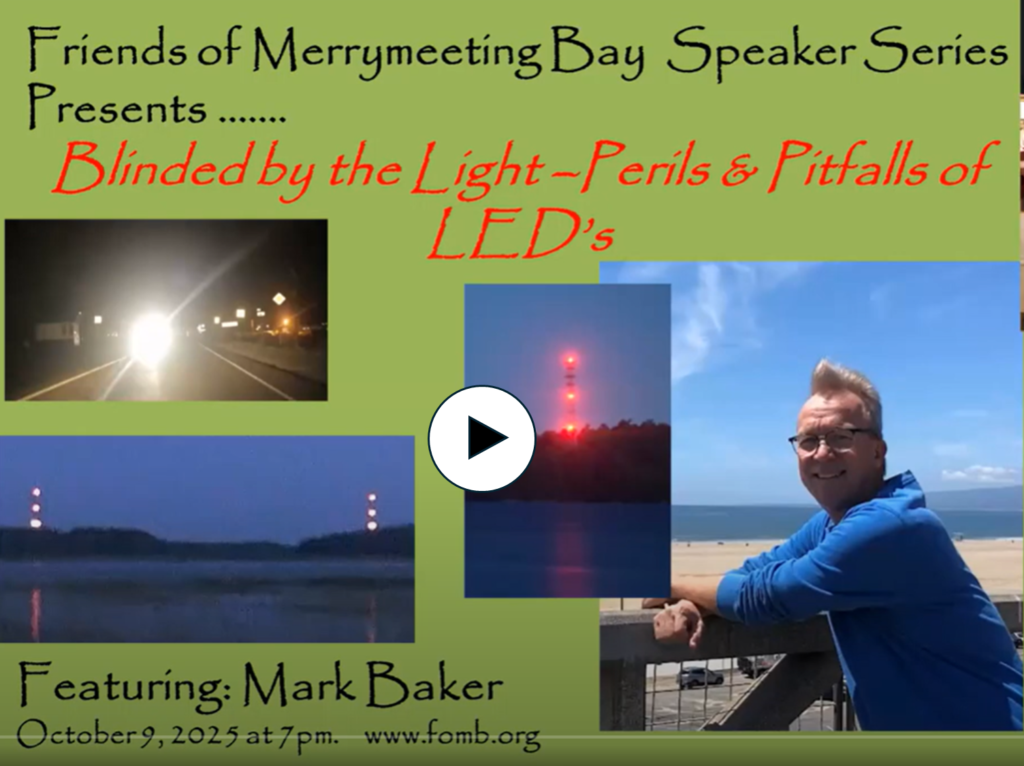The sun is a high-powered energy system that emits the light from a large sphere into all directions. Even though it is far from earth, we know not to look directly at the sun because we could damage our eyes. The light arriving at the earth changes color throughout the day from warm red to blue and back to red. About half of the light is infrared. The sun is steady burning.
A candle emits light in a generally spherical distribution, but with far lower intensity than the sun. A candle is warm red and yellow, with a third to half of the light being infrared. A candle is steady burning, although it may gently flicker from air movement.
An incandescent light bulb emits light in a generally spherical distribution with a higher intensity than a candle, but nowhere near the intensity of the sun. A typical incandescent light bulb is warm yellow and is mostly infrared. An incandescent light bulb may have some sine wave flicker if it is connected to household current.
An LED packs an extreme level of power into a tiny space, directing that energy into a beam. LEDs often emit a spike of blue wavelength light with typically no infrared. LED lights connected to household current exhibit digital flicker.
Spatial, Spectral, and Temporal Properties
Light has many properties. Spatial properties are how the light is distributed in space. Spectral properties are how the energy is distributed at each wavelength. Temporal properties are how the light is emitted in time.
Spatial Properties
The primary building block for the spatial properties of light is the radiometric property called radiance. For visible light, we typically refer to the photometric property called luminance, which is similar to the property of radiance, except that luminance is weighted by the sensitivity of the human eye to different wavelengths. Luminance is measured in candela per square meter, which often called nit in the display industry.
The light traveling through space is measured using the radiometric property radiant intensity or the photometric property luminous intensity. Luminous intensity is measured in candela, which is the intensity of one candle in a given direction.
The light landing on a surface is measured using the radiometric property radiance or the photometric property illuminance. Illuminance is measured in lumens per square meter or lux.
Regulations typically set limits on luminous intensity or illuminance. For example, headlights are regulated by luminous intensity. Streetlighting standards use illuminance. However, there is a geometrical property called etendue which is defined as the source area multiplied by the solid angle containing the light. Since LEDs emit intense light from a small area into an angular beam, the etendue is small. On the other hand, an incandescent light bulb and a High Pressure Sodium streetlight have large etendues.
If we use a lux meter to measure the illuminance of from an LED streetlight, it may read 0.2 lux. This value would indicate a low level of comfortable light illuminating the roadway. However, we may feel pain when we look at an LED streetlight that contains a 5 x 5 array of LED chips, even though the lux meter reads only 0.2 lux. The pain occurs because the lens of the eye focuses the light onto the retina and recreates not only an image of the source, but also the luminance of the LED chips. The high luminance and small etendue of an LED light is why an LED light feels sharp or painful.
A neon sign has a luminance of about 8 nits. Trees and hills in daytime will be about 20 – 50 nits. An LED display is about 300 nits. The luminance of a frosted incandescent light bulb is about 10,000 nits. Maximum human tolerance is 50,000 nits. An LED streetlight is about 1,000,000 nits. An LED chip in a vehicle headlight is 70,000,000 nits. The sun has a luminance of 1,600,000,000 nits.
There is essentially no regulation of luminance for LED sources. Cities will use a lux meter to measure the light from an LED streetlight to claim that the light is not overly bright. However, the lux meter does not have a focusing lens like the eye and is thus not recreating the luminance value of the source. A lux meter cannot be used to accurately describe the intensity of an LED streetlight. Similarly, vehicle headlight intensity is measured by the metric candela which also does not describe the luminance of the source that causes the eye pain. It is a massive failure of the lighting industry and government to have no regulations for luminance and etendue.
Spectral Properties
Human-visible light is generally composed of multiple wavelengths called the spectrum. The spectral output from an LED is different from a candle or an incandescent light bulb because a typical high-powered LED is mostly blue wavelength light, which just so happens to be the same wavelength that controls circadian rhythms, causes glare, and damages the eye.
Figure 1 shows the relative Spectral Power Distribution from a 5500 Kelvin LED. The relative distribution does not tell us the absolute energy of the blue wavelength light, but it does show us that the blue wavelength light at 450 nanometers has the most energy. This blue wavelength also happens to be the most damaging for the human eye and causes the most glare. Blue wavelength light also suppresses the hormone melatonin, reducing the ability of cells to repair themselves at night.

The majority of LED chips do not emit infrared light which can have beneficial properties for humans and is what we feel as warmth. The government claims that infrared light is waste light, but that is a false claim when we consider human health.
Temporal Properties
With an emitter such as a candle or incandescent light bulb, the light is emitted continuously through time. This is not true for an LED emitter connected to an alternating current source. An LED requires electronics to convert the alternating current to direct current. This causes digital flicker which may be consciously noticeable below about 200 Hz, but is subconsciously felt at least as high as 10,000 Hz. Engineers may also use Pulse Width Modulation to purposely flicker the light to give the illusion of a dimmer light. Digital flicker and PWM are unsafe for humans.
In addition to flicker, the lighting designer may choose to purposely turn the light on and off to create a flashing light. LED light turns on and off nearly instantly, rather than having a rise and decay time such as with an incandescent light. This type of flashing can be neurologically hazardous because the brain cannot adapt quickly enough to the changing light energies.
Point Source vs. Surface Source
There is a lot of ambiguity surrounding the terms “point source” and “surface source”, inverse square law, and Lambertian versus isotropic distribution. In general, there are often assumptions that are being made. The assumptions may ignore the impacts of the light on humans or the assumption may be different close to the source versus farther from the source. Below is a collection of information related to these topics that may help the reader come to their own conclusions.
2: The Illuminating Engineering Society claims that LEDs are “point sources”.

3: Underwriters Laboratories claims that LEDs are point sources. “and with very small point sources, such as LEDs,”
4: LED peak luminance was approaching 100,000,000 nits in 2018 – Non-laser Light Sources: High-luminance LEDs target emerging automotive lighting applications
5) https://ocw.snu.ac.kr/sites/default/files/NOTE/791.pdf
6) Surface Source: https://www.evergy.com/ways-to-save/resources-link/equipment/led-flood-and-area-lighting
8) https://youtu.be/KjujQLyIuc0 – In this video, the narrator states that LEDs are not point sources and that the emitted light does not disperse following an inverse square law.
9) Physicist Dr. Nisa Khan states that LEDs are not point sources and that the emitted light does not disperse following an inverse square law in her book Blinding LED Headlights: The Biggest Blunder of Modern Science. https://www.amazon.com/Blinding-LED-Headlights-Biggest-Blunder-ebook/dp/B0DR6BHGFD/ref=sr_1_1
“Flat light sources produce Lambertian light distributions and only flat light sources do this. This means that luminous intensity and luminance are both non uniform in space for the source and what the viewer sees. ALL of illumination scientific theories are based on point light sources, which means there is spherical uniformity for luminance and luminous intensity regarding the light source and what the viewer sees.” – February, 2022 – Dr. M. Nisa Khan, President IEM Lighting Technologies and Author, Understanding LED Illumination.
10) Lighting Resource Center Rensselaer Polytechnic Institute. (https://www.lrc.rpi.edu/resources/publications/pdf/illuminationfund.pdf)
11) Wikipedia – Definition of Point Source: The inverse-square law generally applies when some force, energy, or other conserved quantity is evenly radiated outward from a point source in three-dimensional space. Since the surface area of a sphere (which is 4πr2) is proportional to the square of the radius, as the emitted radiation gets farther from the source, it is spread out over an area that is increasing in proportion to the square of the distance from the source. (https://en.wikipedia.org/wiki/Inverse-square_law)
12) Luminous – (https://luminusdevices.zendesk.com/hc/en-us/articles/4411289188109-Optical-What-do-the-Radiation-Plots-in-LED-datasheets-mean-and-how-do-I-calculate-Lux)


Video Presentation
This 1-hour video presentation by the Soft Lights Foundation explains the physics of LED lights, describes the reports of harm to human and ecosystem health, and discusses the regulatory and legal actions being taken by the Soft Lights Foundation. Some information concerning the spatial properties of LED light has been revised by the author since the creating of this video.
